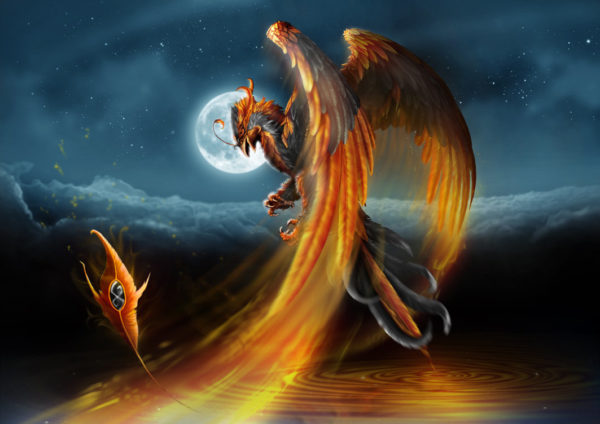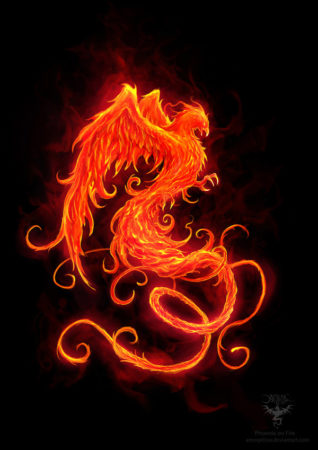
Phoenix by guillaume-phoenix
The phoenix [fee-niks] is a long-lived fiery bird that is present in many different mythologies from around the world – from cultures both alive and those that are long lost in the dust of time. This mythical bird never lays eggs to have it’s own young. It’s said to live anywhere from 500 to 1,400 years before it goes up in flames. When a phoenix “dies”, it does so by combustion and is reborn of the ashes left behind. It rises from its own ashes, in the freshness of youth, to live through another cycle of years. So in a sense, it never truly dies, but regenerates itself and lives forever.
Symbolic
The Phoenix bird has come to symbolize many things including the sun, time, consecration, resurrection, immortality, and renewal in general.
The Phoenix Around the World
There are Chinese, Japanese, Russian, Egyptian, Persian, and Native American counterparts of the Phoenix. Fêng-Huang, Ho-oo, Firebird, Bennu, Huma, and Thunderbird respectively. What they all have in common? All of these beautiful birds are identified with the sun and the ability to resurrect itself.
What did it look like?
Even though there are common symbolism’s, there are many, many physical descriptions of this legendary bird that have them looking vastly different from each other. But all agree that it is a creature of great beauty to behold.
Some cultures describe the phoenix as an eagle-sized bird, others as a hybrid half eagle/half pheasant. Some mythologies describe it being heron-like with a long-neck, beak and legs. It has been described as golden or multi-colored. Some myths say it never eats. Others say it eats only fresh morning dew.
But, my favorite physical description, would be that the Phoenix bird is a masterfully combined medley — utilizing the most beautiful parts of all the birds in the world.
What’s With the Name?
First known use of the word Phoenix is from ancient antiquity. The origin comes from Latin and Greek phoinix meaning ‘Phoenician, reddish purple, or phoenix.’ Also found in Middle English phenix and from Old English fenix.
The word Phoenix comes from the Greek word for “reddish purple”. Purple dye was rare, very costly and hard to get, therefore only the upper-crust could afford it including royalty. So, the color came to represent royalty and the phoenix was clearly considered a royal bird.
Pop Culture

Phoenix on Fire by amorphisss
The phoenix often appears symbolically and literally in popular culture.
Literature
In J.K. Rowling’s Harry Potter series, Hogwarts’ headmaster Albus Dumbledore owns a pet phoenix he calls Fawkes. In Harry Potter’s world, the Phoenix can carry enormous weights, and his song is said to strike fear into the hearts of the impure and give courage into those who are pure of heart. The tears of the Fawkes can heal severe poisoning, and other illnesses and injuries.
William Shakespeare frequently mentions the bird in his plays. He also wrote the poem “The Phoenix and the Turtle”.
In C. S. Lewis’ book, “The Magician’s Nephew”, a phoenix guards an Eden-like garden and also appears later in “The Last Battle”.
Music
American singer-songwriter Dan Fogelberg’s 1979 double-platinum album is called Phoenix and the cover features a representation of mythical bird.





